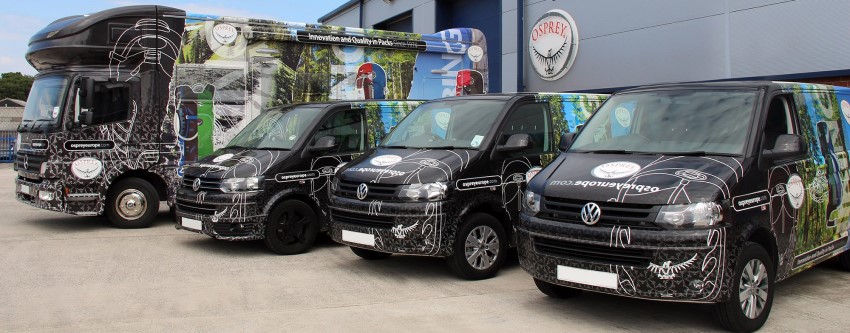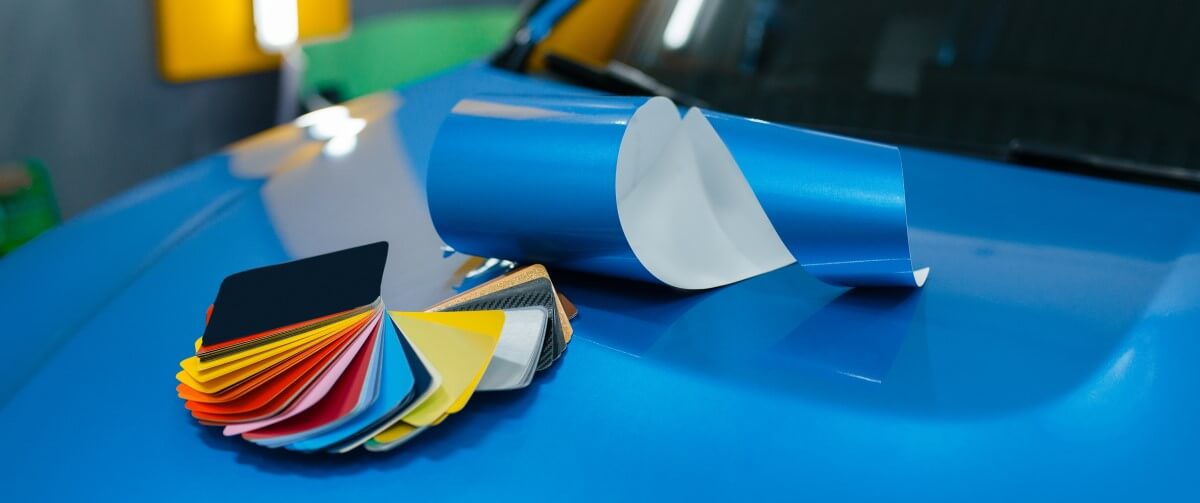Vehicle branding is a great way to increase awareness and get people talking about what you do. But before you brand a car or van, you might want a better idea of what can be achieved and learn of potential downsides. If this sounds familiar, then this article is for you.
Here, we explain what it means to brand a vehicle and run through the biggest vehicle branding pros and cons, so you can decide if it’s the best choice for you.
What is vehicle branding?
The term comes from taking company colours, logos and straplines, and placing them onto the side of a car or van. Almost always done with a vinyl wrap, it’s a great way to get your company and its message out there. The wrap can also include phone numbers, social media handles and QR codes. However, some of the best-known brands go with simple colours and let their logos do the talking.
Want to know more? Our ultimate guide to vehicle branding explains everything you need to know.
What are the benefits of vehicle branding?
Here, we explain what makes a branded car or van such a great investment.
1. It gets your company noticed
There’s no simpler way to advertise than with vehicle branding. Every time you drive, your vehicle will be seen by pedestrians and your fellow drivers alike. Whether you’re in a small town surrounded by homes, on a busy highway, or simply parked up, your brand will continue to be seen. That doesn’t stop until you drive into a garage.
2. It's the cheapest form of advertising
You only pay for a wrap once, and it’s highly affordable. Contrast that with pay-per-click advertising, which can run into hundreds or even thousands per week – with no certainty you’ll even reach the right people. A branded vehicle doesn’t cost you anything per view. Our article on wrapping ROI vs traditional advertising looks at this in more detail.
3. Vehicle branding is durable
A branded wrap protects the paintwork beneath from dirt, bird droppings, and light scratches. But how long will your vehicle branding last before it must be replaced? A well-applied vinyl wrap can survive more than 5 years when taken care of. For advice on maximising its lifespan, check out our guide on wrap aftercare.
4. Branding builds trust
Like it or not, white vans have a poor reputation. Branded vans and cars explain what you’re about, and so they put people at ease. It’s much less faceless, and it also makes the company look much more professional.
5. You can generate actual data
It’s not for everyone, but by putting unique contact data on each vehicle, you can see how many leads you’re getting from each wrap. This can help you decide which locations get you the most profit. For example, if more calls are coming from a branded vehicle in one town, you’ll know to travel there more often.
What are the downsides of vehicle branding?
An article on the pros and cons of vehicle branding should list the downsides too. Take a look and see if any of these might put you off.

1. You're not ready for the attention
Too much, too soon, and you might not be able to screen the calls. To make the most of your wrap, you’ll ideally have a way to qualify your leads and sift out the time wasters. If you just want as many enquiries as possible, then you won’t have a problem.
2. It's an indicator of financial status
To be clear, there’s no evidence to suggest that branding a vehicle increases the chance of theft or vandalism. Still, it’s something to be mindful of. If you’re concerned, you can add a notice stating that no equipment is stored in the van overnight.
3. There are small-scale alternatives
Not everyone needs a lot of inbound enquiries. You can still build trust with a printed magnetic vehicle decal for cheap. These are very budget-friendly, allowing you to showcase your logo on the move at very little cost.
4. Vehicle branding takes a professional
If you do go for a vehicle wrap, you’ll have to look after it. You’ll also need to prepare the surface beforehand by cleaning it thoroughly and taking care of any major defects – especially if you want your branding to last for years to come.
What materials are used in vehicle branding?

Vehicle wrapping is done using sheets of vinyl. This synthetic material, also used for printed lettering, sticks to the bodywork and is easily removed. Wrap companies typically use high-quality vinyl for their projects, pulling from manufacturers like 3M, Arlon, and Dennis Avery.
How much does it cost to brand a vehicle?
It depends on the vehicle being wrapped. The average cost to fully wrap a van is between £1,900 and £3,200. If you have a car, it'll cost between £1,600 and £3,000. Wrapping a fleet of 3 or more vehicles will usually net you a per-vehicle discount, giving you money off the full total.
Half wraps are cheaper, and simple graphics (like signwriting and a logo) can be as low as £570. So, the cost of vehicle branding comes down to what you want, as well as the type and size of the vehicle you own.
Need help branding your vehicle?
It all starts with a vehicle template and the help of a graphic designer. The designer uses the template to show how your vehicle will look with the branding applied. This needs to be accurate, as it’s then used by the installation team. So, what should you do?
Spend just 30 minutes with one of our in-house designers! They’ll create your template from scratch and present a 3D render so you can see how your vehicle will look once it’s fully branded. This is all shown to you live on screen.
Sounds good, doesn’t it? Click below to book your free design consultation!

